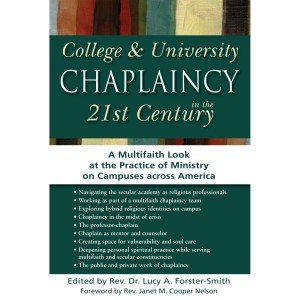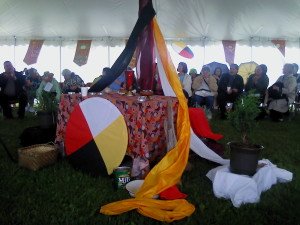In his chapter o f the recent book, College and University Chaplaincy in the 21st Century, Richard Spalding writes of his attempts to connect with the spiritual needs of the many “unaffiliated” or “non-religious” people on campus. One response to their need for spiritual connection has been an experiment named “StoryTime,” Sunday evening events when students gather to listen to one another’s stories. Spalding writes of his surprise when, after only two weeks, over a hundred students gathered to listen to the story of their peer.
f the recent book, College and University Chaplaincy in the 21st Century, Richard Spalding writes of his attempts to connect with the spiritual needs of the many “unaffiliated” or “non-religious” people on campus. One response to their need for spiritual connection has been an experiment named “StoryTime,” Sunday evening events when students gather to listen to one another’s stories. Spalding writes of his surprise when, after only two weeks, over a hundred students gathered to listen to the story of their peer.
Each Sunday, the chosen student is invited to tell some part of his or her story which has not often been told, enabling the room full of students to enter into a way of life different their own. The result is what Spalding calls “an unlabelled but unmistakeable sanctuary,” a kind of “sacred space” which “scatters at least as many clues to the great mystery as most Bible studies I’ve ever facilitated.” Through the power of story, students are given the opportunity to engage the world of the other, grasping at truths which can only be hinted at by metaphor.
The ability of good storytelling to usher us into another world has long been known in our Church and by our greatest preachers, beginning with the oral cultures of the Old Testament and moving through the Patristics and the Middle Ages. Stories hint at what St. Thomas Aquinas called the way of analogy, the idea that God can only be grasped by describing what God is like. Jesus did this with the parables of the kingdom, knowing that the disciples could never understand if he described it directly: the kingdom is like a mustard seed, a coin, a pearl, and so on.
Yet in our 21st century Canadian context, I fear that we have begun to lose sight of the power of story for understanding both God and one another. As much as new technologies have been of benefit to us, they are teaching us to break ideas into little bites in such a way that most of us can no longer let one another into our lives and into the life of God by storytelling.
It was from our own Bishop Mark MacDonald that I first began to understand the importance of story for engaging the deepest truths of our faith. If he decides to, Bishop Mark can preach the most moving, theologically rich, and inspiring-to-mission sermon by telling only stories. He has the gift of our ancestors and of Jesus, who used images to help us glimpse the deeper things which cannot be explained in words. Other people I’ve know who can captivate with their stories include clergy from the Arctic and from Pakistan, where they tend to be less removed from the traditions of oral culture and more engaged with one another’s stories.
Perhaps we cannot begin to fully grasp the stories of our faith until we learn to listen to the stories of one another. I have heard it said that our Indigenous peoples will have some important prophecies for our Church in this century, and I wonder if the gift of storytelling might be one of those truths the rest of us will learn to embrace. After all, the sermons I remember months and years later are not the deep exegetical ones but the ones full of stories which captured my imagination. So too I may often forget a student’s name and yet remember his story.
In the days of the Old Testament, bonds of family and friendship were established on the basis of shared story. The world- and our place within it- was understood through images and pictures and metaphors. God is like a hen, a mother, a crag in the rock.
It is important today more than ever to reclaim the gift of story in our Church in light of the challenges we face. Our culture at large does not value stories of the other, yet we have moved into a time when the “other” we encounter looks more different from ourselves than it ever did. Ongoing conversations between Indigenous peoples and settlers, Africans and Europeans, Conservative and Liberal, rich and poor- not to mention dialogue with those who do not share our faith or any faith- require us to hear the stories of one another that we might be drawn into the story of God among us.
The students captured by StoryTime were not looking for an experience of transcendence, but as they heard one another’s stories they stumbled across a great gift for which we were created: the ability to see, to hear, and to feel just a glimpse of how another experiences the world. And in that small glimpse, I believe, they experienced the face of God in one another.

